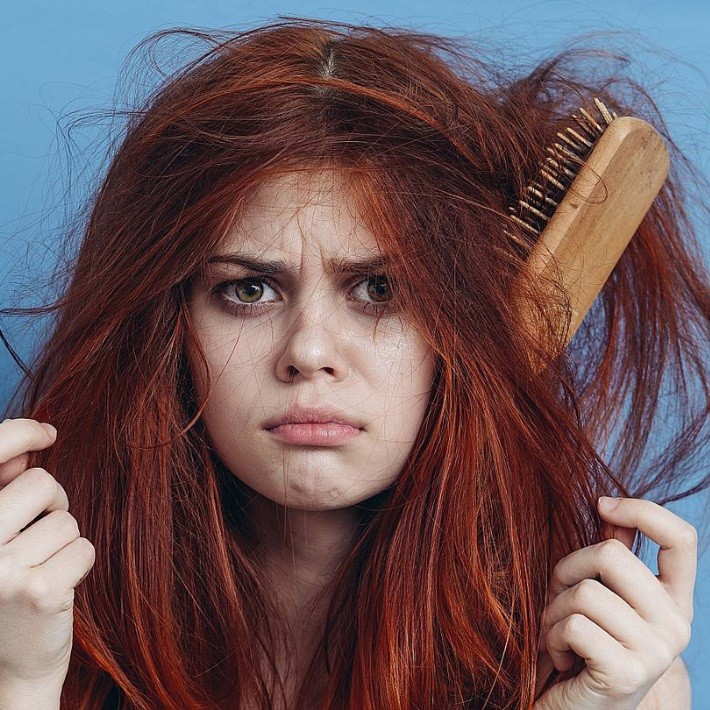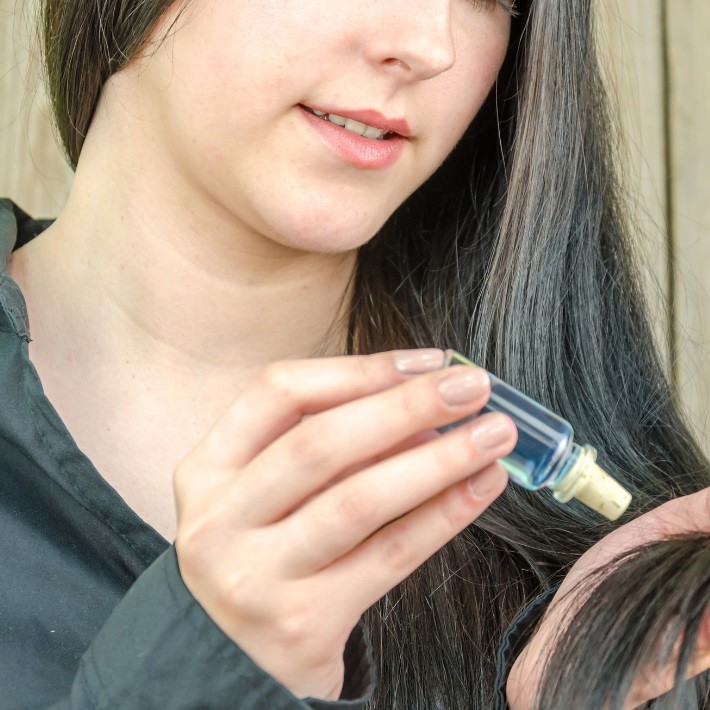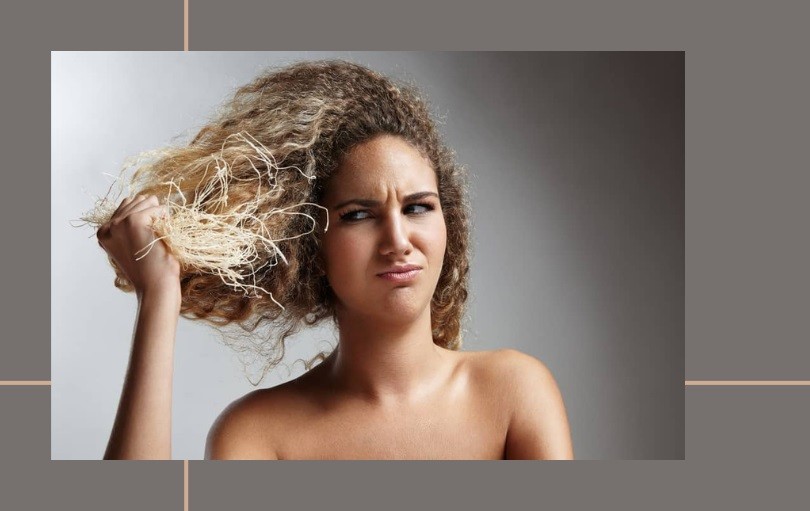Last Updated on March 28, 2025
Ever found yourself wondering, “Why does my hair feel like straw?” You’re not alone. Many people struggle with dry, brittle hair that seems unmanageable and lifeless. In this comprehensive guide, we’ll delve deep into the causes of straw-like hair and provide actionable solutions to regain your hair’s natural shine and softness. Let’s unlock the secret to healthier, happier hair!
Why Does My Hair Feel Like Straw?

Related: How Rare Is Strawberry Blonde Hair?
Environmental Factors
- Sun exposure: Just like our skin, our hair is susceptible to sun damage. Prolonged exposure to the sun’s harmful UV rays can weaken and dry out your hair, making it feel like straw.
- Temperature changes: Extreme temperature fluctuations, such as transitioning from cold outdoor air to heated indoor spaces, can cause hair to become dry and brittle.
- Air pollution: Environmental pollutants can accumulate on your hair, stripping it of essential oils and leaving it feeling rough and dry.
Lifestyle Choices
- Over-washing: Washing your hair too frequently can strip it of its natural oils, leading to dryness and a straw-like texture.
- Heat styling: Overuse of heat-styling tools like flat irons, curling wands, and hair dryers can damage your hair and cause it to feel straw-like.
- Chemical treatments: Coloring, perming, and relaxing treatments can cause significant hair damage, leaving it dry, brittle, and feeling like straw.
Hair Feel Like Straw: Common Causes
Lack of Moisture
If your hair feels like straw, it’s likely lacking in moisture. To combat this issue, it’s essential to address the root cause and reintroduce hydration to your hair.
Tips for restoring moisture:
- Limit shampooing to every other day or less
- Use a hydrating conditioner
- Apply a deep conditioning mask once a week
- Use a leave-in conditioner
Protein Overload
Although protein treatments can be beneficial for damaged hair, too much protein can lead to the straw-like texture. Balance is crucial in maintaining healthy hair, so watch out for protein-rich products and their frequency of use.
Signs of protein overload:
- Hair feels stiff and brittle
- Loss of elasticity
- Breakage and shedding
How to fix protein overload:
- Cut back on protein treatments
- Incorporate moisture-rich products
- Balance protein and moisture in your hair care routine
Related: Does Laser Hair Removal Get Rid Of Strawberry Legs?
Nourishing Your Hair: Top Ingredients

Oils
Argan oil
Argan oil is a powerhouse ingredient that can help combat dry, straw-like hair. Rich in antioxidants, vitamin E, and essential fatty acids, argan oil deeply nourishes and hydrates your hair.
Coconut oil
Coconut oil is another excellent option for addressing straw-like hair. It penetrates the hair shaft, providing much-needed moisture and protection from environmental factors.
Humectants
Glycerin
Glycerin is a humectant that attracts moisture from the air and locks it into your hair, keeping it hydrated and soft.
Aloe vera
Aloe vera is a natural humectant that promotes hair hydration, reduces frizz, and soothes the scalp.
Expert Tips for Maintaining Soft, Silky Hair
Trim Regularly
Regular trims help remove split ends and promote healthier hair growth.
Limit Heat Styling
Embrace your natural hair texture, and limit the use of heat-styling tools to reduce the risk of hair damage and that straw-like feeling.
Protect Your Hair from Sun Damage
Wear a hat or use hair products containing UV protection to shield your hair from the sun’s harmful rays.
Use a Silk Pillowcase
Silk pillowcases help reduce friction on your hair while you sleep, minimizing breakage and frizz.
Brush Gently
Avoid tugging and pulling your hair when brushing to prevent breakage. Use a wide-tooth comb or a brush with flexible bristles for gentler detangling.
Related: How To Lighten Dyed Red Hair To Strawberry Blonde?
FAQs: Answering Your Hair Care Questions
Q: How often should I use a deep conditioning mask for my straw-like hair?
A: For best results, apply a deep conditioning mask once a week to restore moisture and nourishment to your hair.
Q: Can diet impact the texture of my hair?
A: Absolutely! A well-balanced diet rich in vitamins and minerals, such as zinc, biotin, and omega-3 fatty acids, is essential for maintaining healthy hair.
Q: What is the best way to protect my hair from heat damage while styling?
A: Always use a heat protectant spray or serum before heat styling, and try to limit the use of heat tools as much as possible.
Q: Is it possible to repair severely damaged, straw-like hair?
A: While it may not be possible to reverse all damage, implementing proper hair care practices and using nourishing products can significantly improve your hair’s texture and appearance.
Q: How can I tell if my hair has protein overload?
A: Signs of protein overload include stiffness, brittleness, loss of elasticity, and increased breakage. If you suspect protein overload, reduce your use of protein-rich products and focus on restoring moisture balance.
Q: Are there any DIY hair masks I can try to improve my hair’s texture?
A: Many natural ingredients, such as avocado, honey, and yogurt, can be combined to create nourishing hair masks. Just be sure to research recipes and ingredients to ensure compatibility with your hair type.
Conclusion
In conclusion, the question “Why does my hair feel like straw?” can be attributed to various factors, including environmental, lifestyle choices, lack of moisture, and protein overload. By identifying the culprit and taking the necessary steps to address the issue, you can bring life back to your locks and enjoy soft, silky hair once again.

